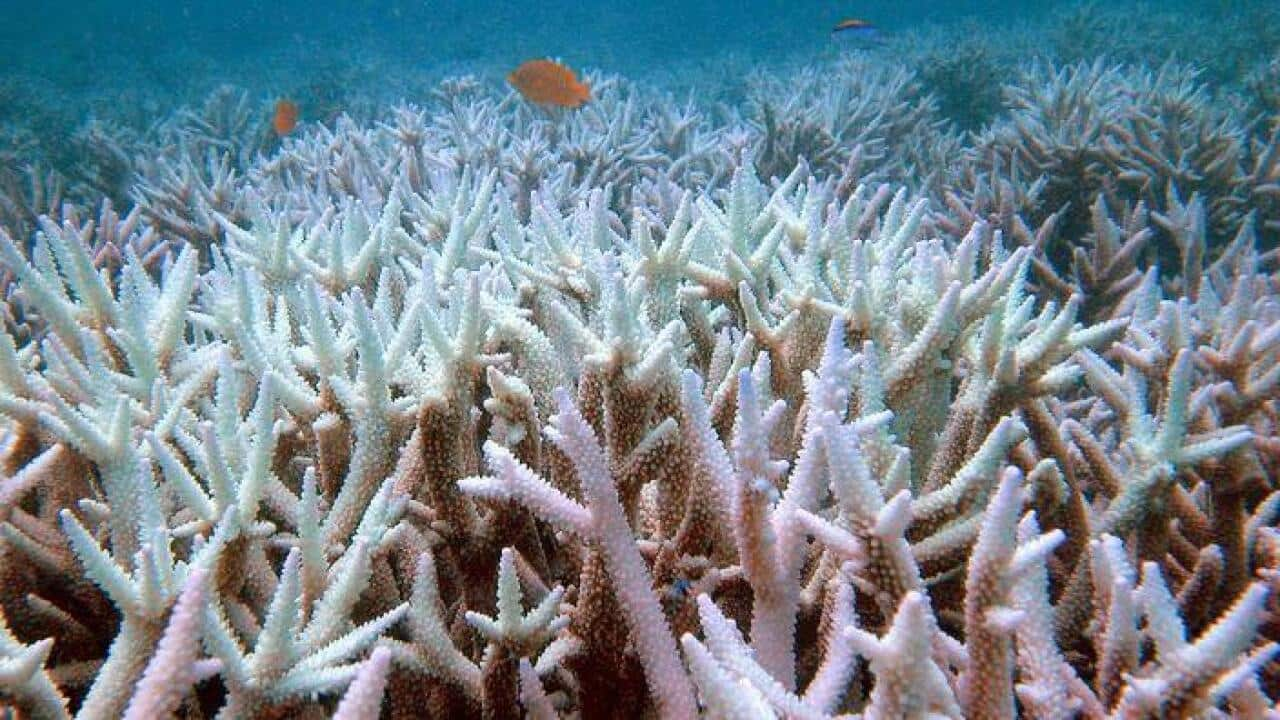The iconic Great Barrier Reef has reached a severe level of coral bleaching more widespread than previously thought, prompting authorities to increase the threat level to its highest.
The Great Barrier Reef Marine Park Authority on Sunday lifted its response to level three, which means severe regional bleaching has been detected across the underwater ecosystem.
The worst hit areas are in the remote far north on inshore Cape York reefs, with up to half of the coral there dying from prolonged higher than average sea surface temperatures.
The revised bleaching level comes almost a week after authorities raised the coral bleaching warning from level one to level two after widespread bleaching was detected.
Environment Minister Greg Hunt flew over the reef on Sunday to observe some of the hardest hit areas around Lizard Island, north of Cairns.
"As you go north of Lizard Island, it becomes more severe," he told reporters.
Upgrading the coral bleaching response to level three means scientists will immediately act to track the rate of coral bleaching, he said.
"That means we are moving to immediately increasing monitoring, and that's being coupled with action that is being taken," the minister said.
The chair of the reef authority says the wet season appears to have spared most sections of the 344,400 square kilometre marine park from coral die-off.
"We still have many more reefs to survey to gauge the full impact of bleaching, however unfortunately, the further north we go from Cooktown, the more coral mortality we're finding," Russell Reichelt said.
He said upgrading the response level to three will step up surveys of coral mortality, which will help them better understand what is affecting the reef and guide their next steps.
Last Monday the authority raised the coral bleaching warning from level one to two after surveys carried out by divers over the preceding fortnight found reefs around Lizard Island, north of Cairns, and further north were the worst impacted.
They also detected severe bleaching around inshore reefs and moderate on mid-shelf areas.
Reefs further south had only minor to moderate bleaching, some of which was typical for this time of year.
WHAT'S MAKING THE ONCE VIBRANT GREAT BARRIER REEF TURN WHITE?
- heat stress caused by ocean surface temperatures reaching as high as 33C in February, a symptom of a strong El Nino weather system
- heat stress can cause coral to expel tiny algae that usually provides the corals with most of their colour and energy
- without the algae, the coral's bright white skeleton is revealed
- coral can recover from bleaching if heat stress lessens and conditions return to normal
(Source: Great Barrier Reef Marine Park Authority)

